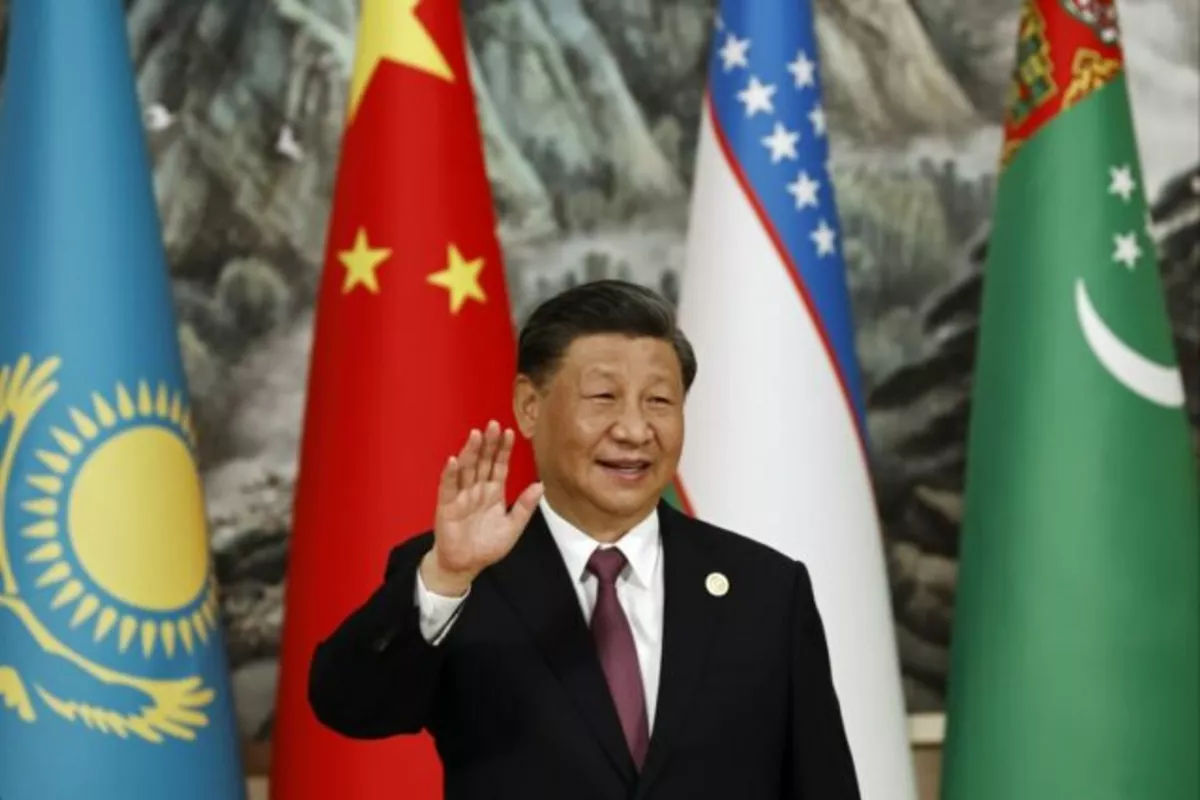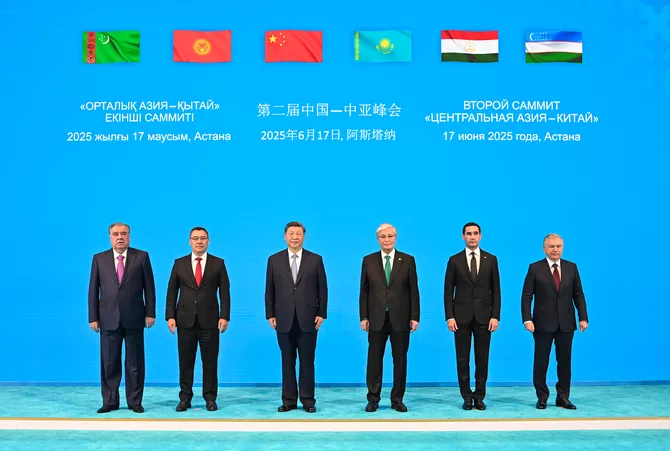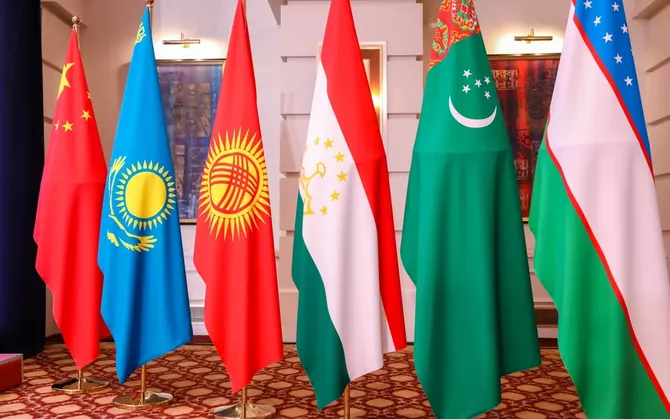
Photo credit: SCMP
While the world remains fixated on the escalating conflict between Iran and Israel and the growing number of flashpoints elsewhere, another development-quieter but no less consequential-has taken place: the Second China-Central Asia Summit.
Overshadowed by war headlines, this event in Xi’an may well be one of the most geopolitically significant moments of 2025. It sends a clear message: China is not only deepening its engagement with Central Asia, it is also redrawing the map of regional influence in ways the West cannot afford to ignore.

Chinese President Xi Jinping poses for a group photo with leaders of five Central Asian countries participating in the second China-Central Asia Summit in the Kazakh capital of Astana on June 17, 2025. Photo: Xinhua
At a time when the global order is being tested, Central Asia is rapidly emerging as a critical hinge between East and West. Once viewed primarily through the lens of Russian influence, the region is now increasingly tied to Beijing’s vision of a multipolar world. And China is not simply engaging-it is building a framework for long-term strategic integration.
President Xi Jinping’s remarks at the summit underscored a growing narrative: China and the five Central Asian states are developing a “shared spirit” rooted in mutual respect, trust, and modernization through high-quality development. This is not mere rhetoric. The signing of a Treaty of Eternal Friendship, Good Neighborliness, and Cooperation reflects an ambition to institutionalize this spirit, not only in political terms but through infrastructure, education, technology, and energy.
Crucially, China announced the creation of three new regional cooperation centers focused on poverty reduction, education, and desertification control. These are not symbolic gestures. They represent an effort to embed Chinese influence in the daily governance challenges of Central Asian states-from climate adaptation to human capital development. More than aid, this is strategic statecraft.

Photo: Akorda
Consider the bilateral meetings that ran in parallel to the summit. Xi offered tailored proposals to each partner: boosting non-resource sector trade with Turkmenistan, accelerating infrastructure projects with Tajikistan, expanding AI and green energy cooperation with Kyrgyzstan, and expressing concern over regional instability in talks with Uzbekistan’s President Mirziyoyev-particularly referencing Israel’s strikes on Iran. These aren’t isolated handshakes. They form a mosaic of China’s regional consolidation strategy.
Meanwhile, the summit also delivered a series of memoranda and agreements on industrial cooperation, green minerals investment, and Belt and Road implementation-substantive moves that deepen economic entanglement. Equally important was Xi’s public reaffirmation of China’s support for the sovereignty and security of Central Asian nations-a not-so-subtle reminder to Moscow and Washington that Beijing is now a guarantor of regional autonomy.
Cultural diplomacy, too, is part of the equation. The call to enhance the role of Confucius Institutes and Traditional Chinese Medicine centers is a soft-power play with hard strategic implications: shaping narratives, education, and public sentiment over generations.

Photo credit: kun.uz
What’s emerging is a region no longer content to be a geopolitical chessboard-it is becoming a player in its own right, choosing its partnerships and shaping its future. For China, Central Asia is not a periphery. It is a proving ground for its model of engagement: investment-led, multilateral, and framed as mutually beneficial.
Western policymakers should take note. As attention remains fixated on immediate security crises, China is building-quietly and methodically-a sphere of influence founded not on military bases or sanctions, but on connectivity, education, and long-term alignment. The Second China-Central Asia Summit is a blueprint, and it is working.
Ignoring this would be a strategic mistake.
Share on social media